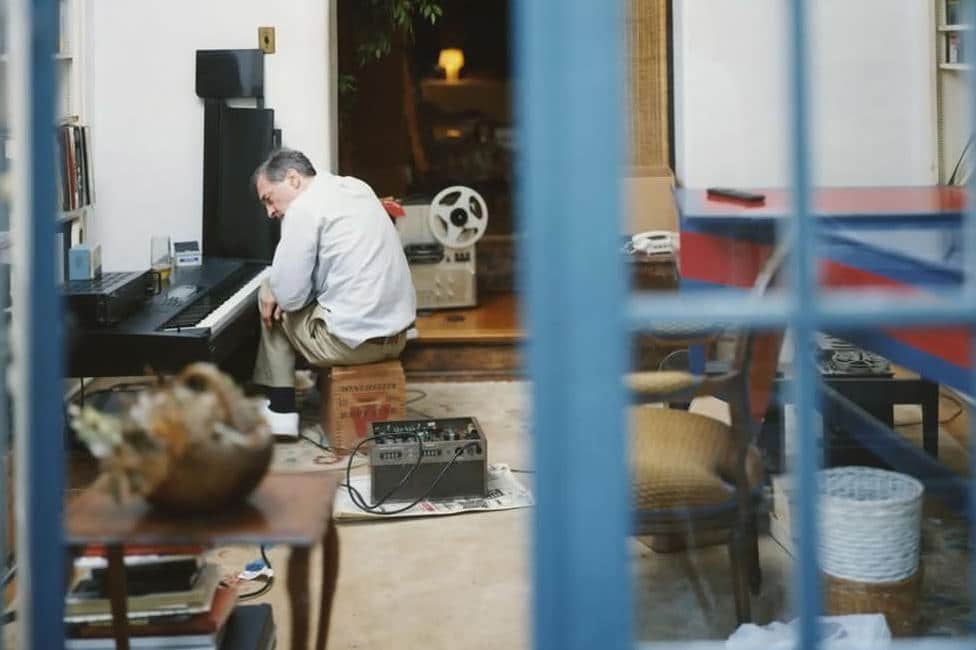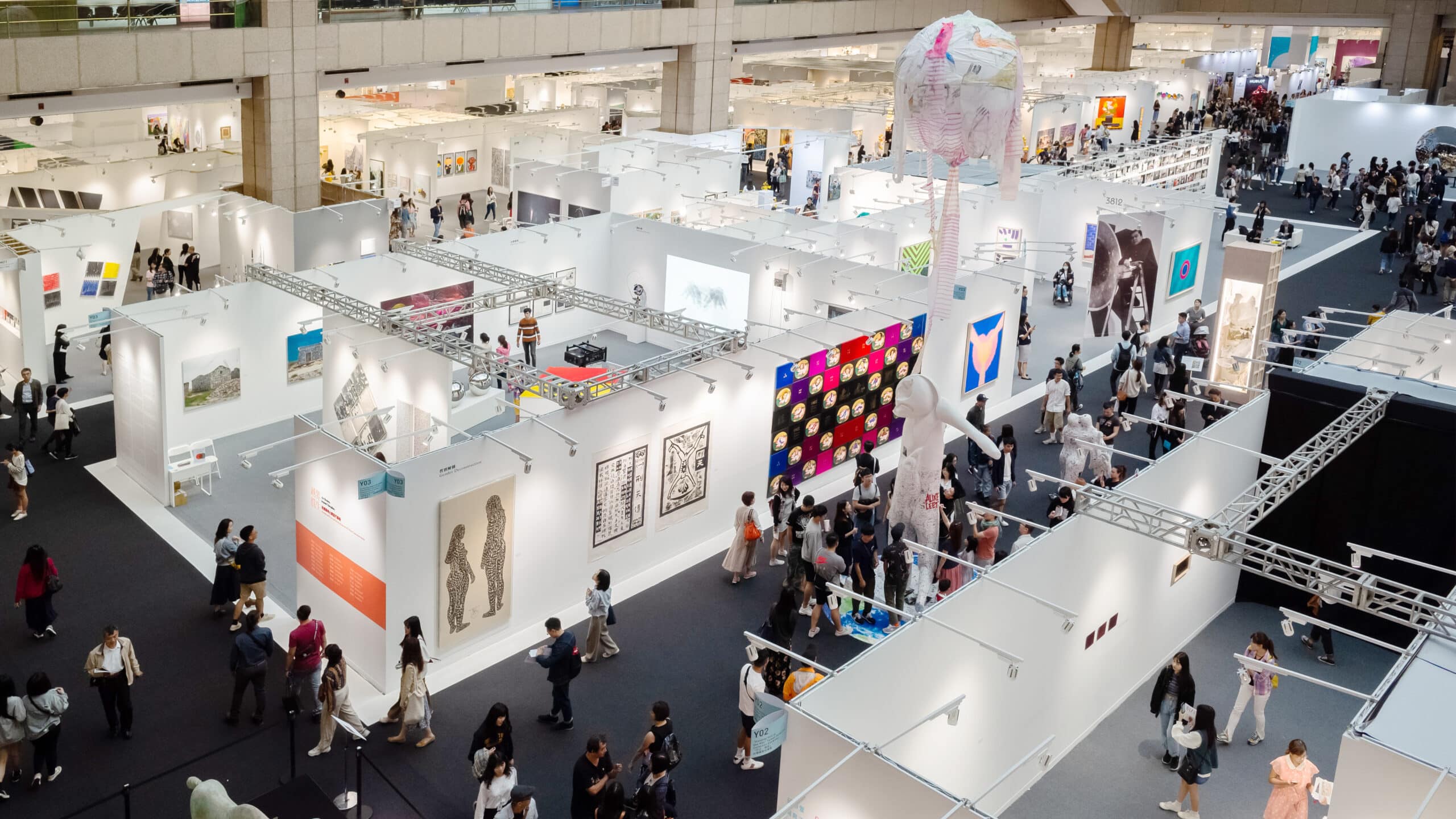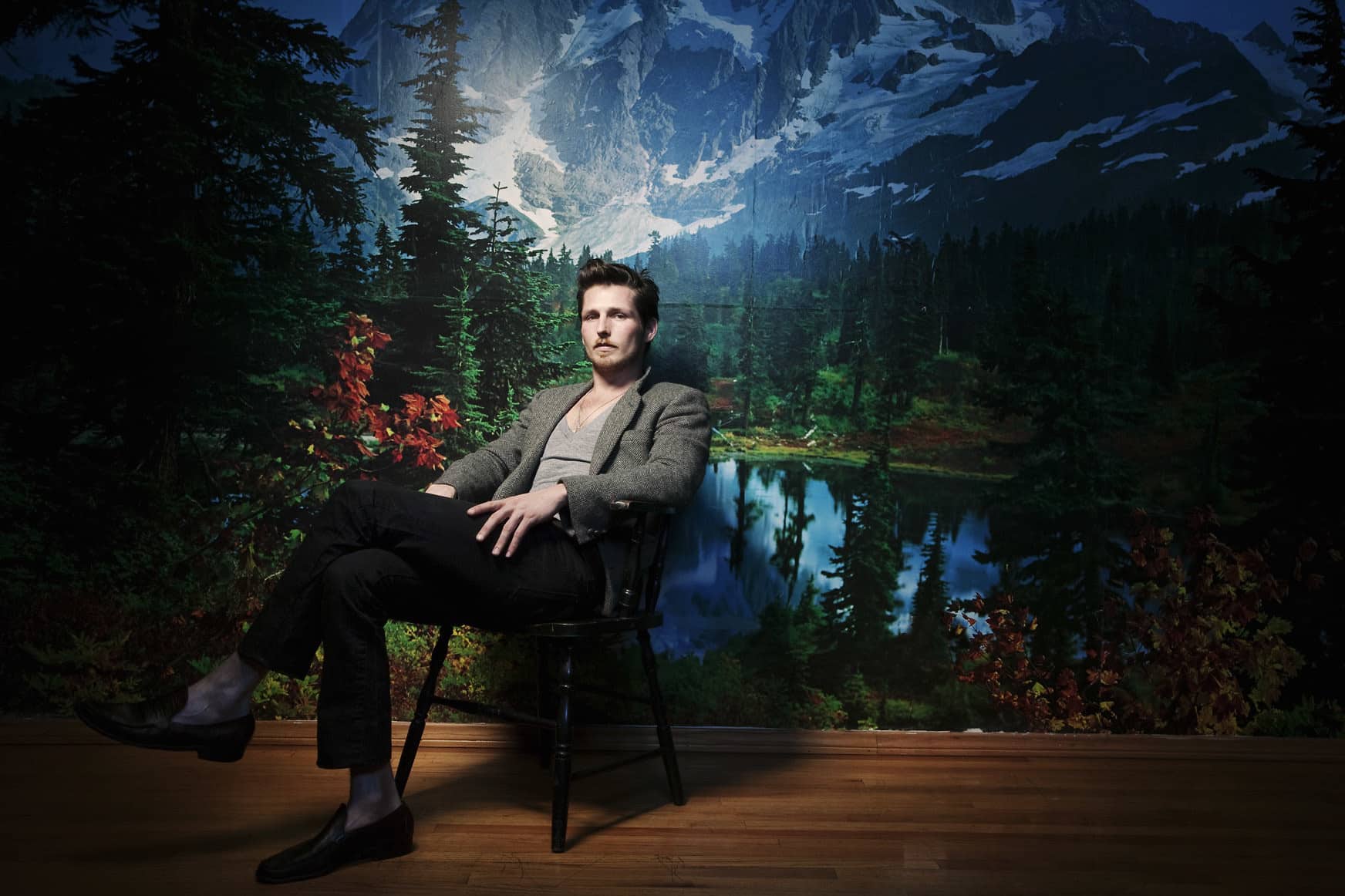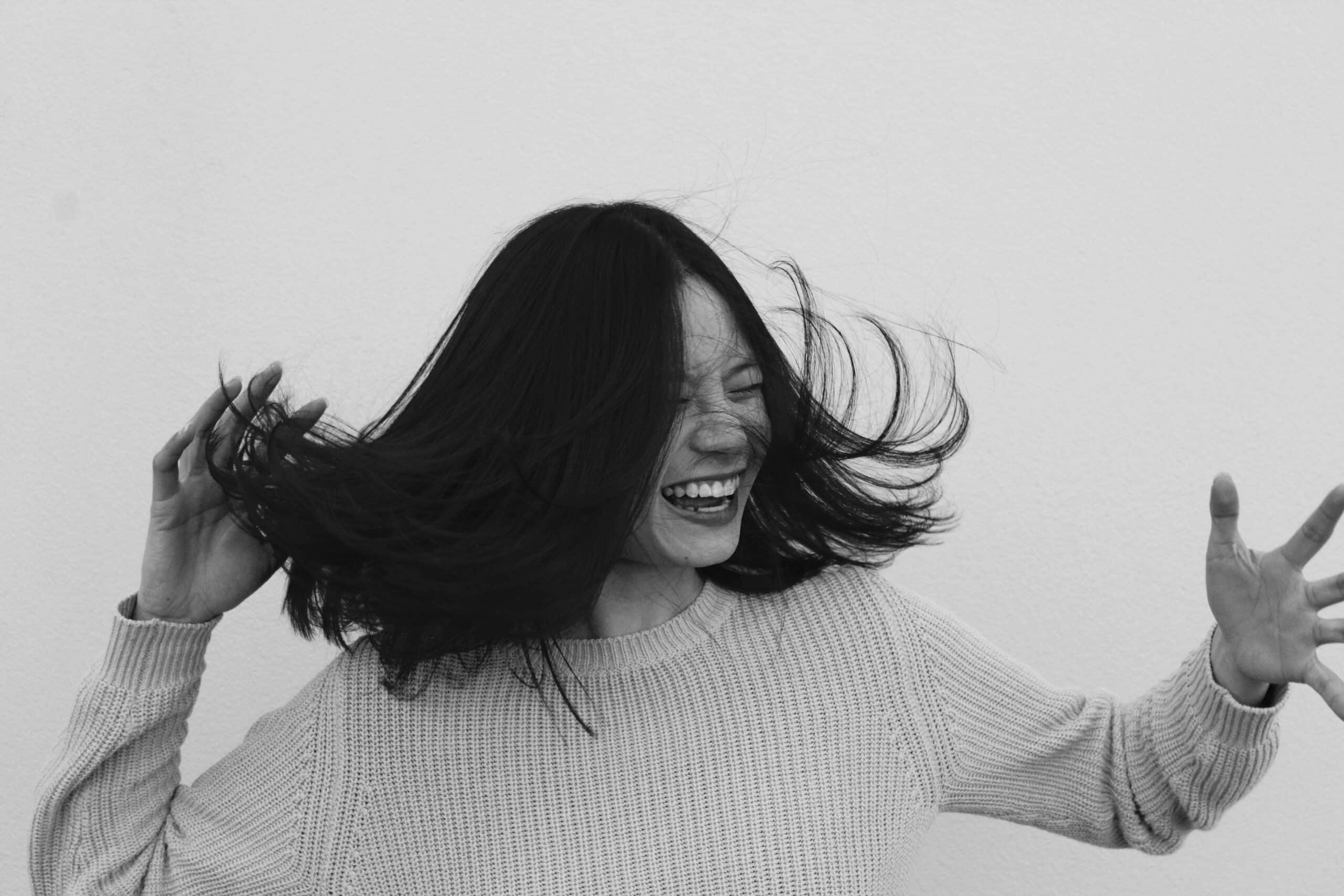At 78 years old, famed photographer William Eggleston released his first album of synth music. The record’s title, Musik, uses the German spelling for “music” to pay tribute to his hero Johann Sebastian Bach. Like Eggleston’s photography, his compositions, which are mostly improvised, feel incredibly natural and notably strange. The songs pulse and move organically, with almost all of them containing small shreds of dissonance that create an uneasy feeling. Most wouldn’t be out of place in a scene from Twin Peaks, and indeed, David Lynch is a well-known fan of Eggleston’s work.
Released by record label Secretly Canadian, who also rep Yoko Ono, Eggleston’s 13 tracks are culled from over 60 hours of recordings take took place in the ’80s and lived exclusively on 49 floppy discs until now. The cover echoes Eggleston’s aesthetic, featuring the artist at home sitting with his synthesizer, framed by calm, deep blues.

It’s a slightly strange career move, but in the press release for Musik Eggleston stated that he often says he feels music was his first calling. If photography only comes in second place, it’s been a very successful consolation prize. Eggleston’s impact on modern photography has led to him being widely considered “the godfather of color photography.” Until Eggleston’s work was exhibited at the Museum of Modern Art in 1976—an exhibition that was mostly critically panned—color photography hadn’t been taken as seriously as black and white. Fellow American photographer Walker Evans, most famous for his Great Depression work, had even referred to color photography as “vulgar.”
Of course, that’s all changed. And we have Eggleston largely to thank for it. His highly saturated photos take the mundane and turn it into something beautiful, strange, and complex, and you can see the influence of his work in the aesthetic choices of many photographers today.
In the listening experience of Musik, it was difficult for us to separate the audio with his legacy of visuals. We decided to go with it, and channeled a synaesthetic spirit to match up songs with Eggleston’s photographs.
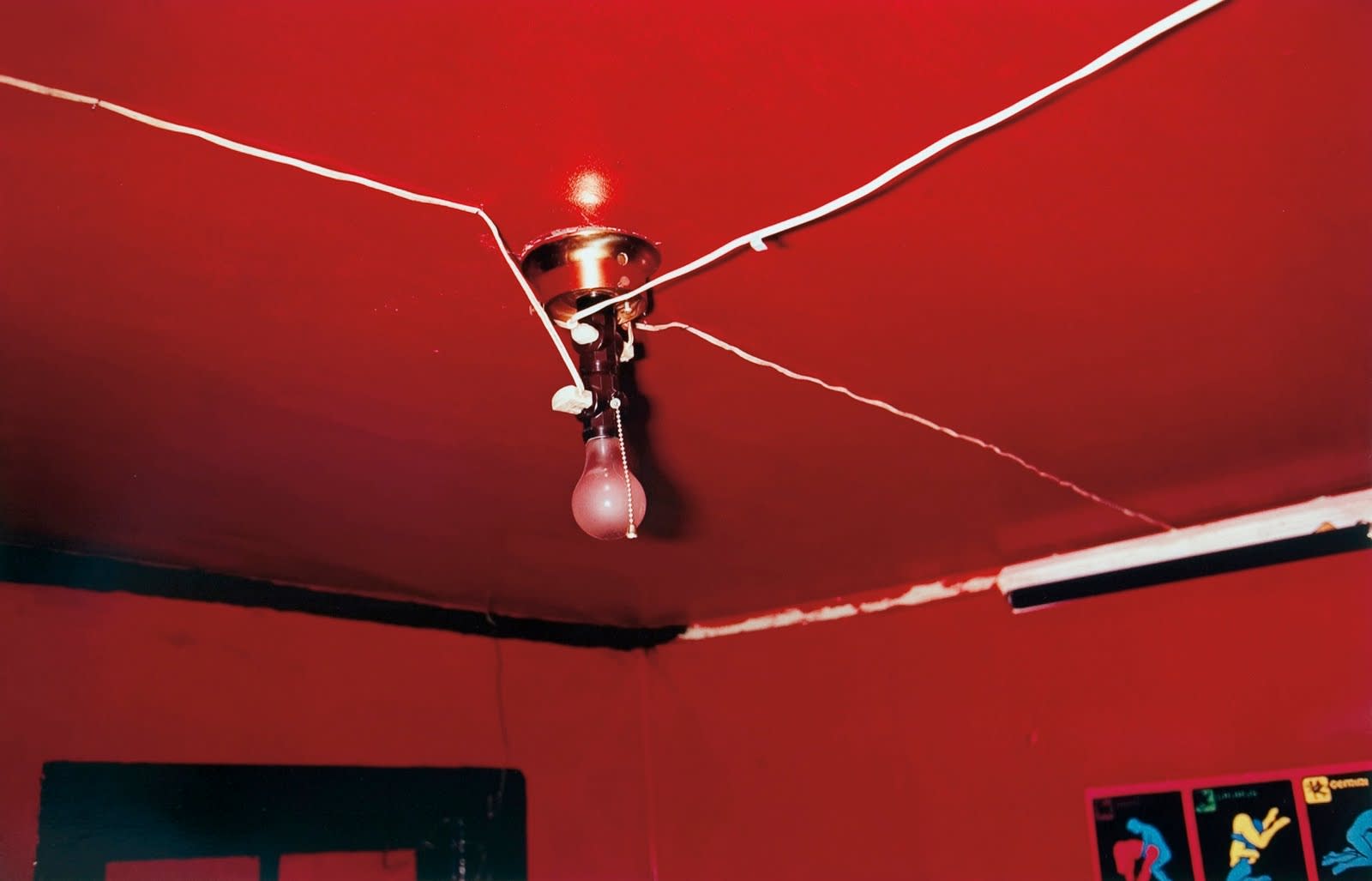
“Untitled Improvisation DCC 02.25 3-01″ + Greenwood, Mississippi, 1973
You might recognize Greenwood, Mississippi, 1973 from the cover of Radio City by power pop band Big Star. Eggleston’s fellow Memphisians wrote the original version of “In The Street,” which became the theme song for That ‘70s Show.
The photograph is a shot of his dentist friend’s ceiling, painted a chilling blood red, with a naked, red light bulb framed near the centre, and three white wires spider-webbed outward from it. It’s electrifying and uncomfortable all at once, incredibly stark and drenched in a hue that almost seems impossible. Eggleston has said himself the photo is, “so powerful, in fact, I’ve never seen it reproduced on the page to my satisfaction.”
What Guardian writer Sean O’Hagan called, “an indefinable sense of menace” also runs through “Untitled Improvisation DCC 02.25 3-01.” It’s the most percussive piece on Musik, laden with an anxiety-inducing sense of doom, and what sounds like a fire alarm bell running through nearly the entire composition. Sinister synths stomp around in the background like some sort of unseeable, shadowy beast. It’s not for the faint of heart.
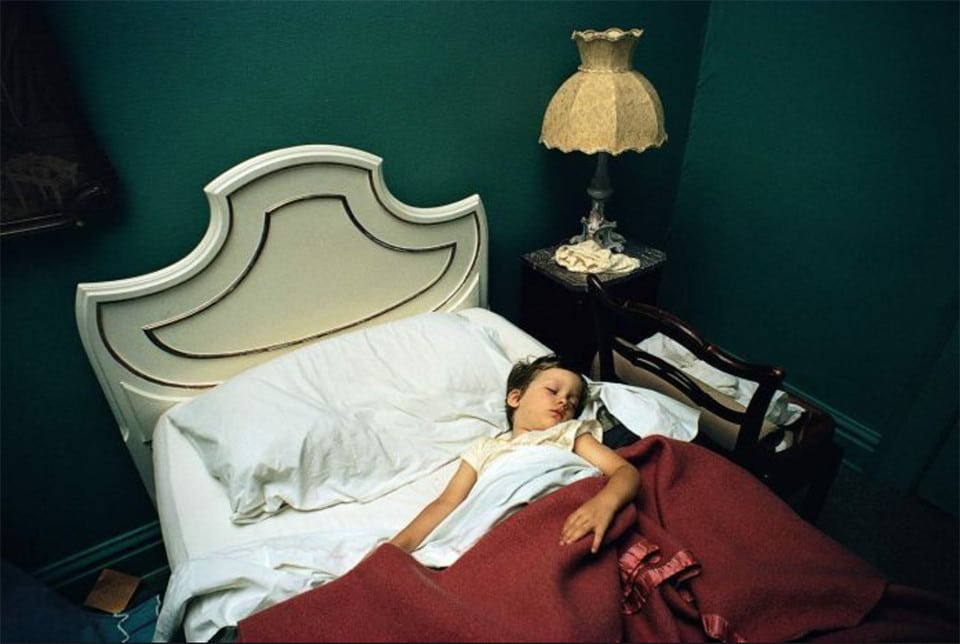
“Untitled Improvisation 02.21″ + Untitled (Boy asleep in bed, lamp), 1970
Most of Eggleston’s photographs are untitled, with some notes indicating the place and time they were made. This particular one, picturing Eggleston’s eldest son William sleeping peacefully in a large bed, surrounded by heavy forest green walls and a red blanket, is an especially serene portrait of his. The colours almost bring the holiday season to mind, and it’s easy to wonder what the child might be dreaming of—hopefully something as untroubled as his facial expression—sprawled out in this comfy looking room.
“Untitled Improvisation 02.21 is one of the more melodically upbeat tracks on Musik, featuring a bouncy playfulness that recalls a sort of childlike wonder. It begins gently, but soon finds an energized joy that is jaunty and classic-sounding, like something that could be the background music for an especially carefree dream.
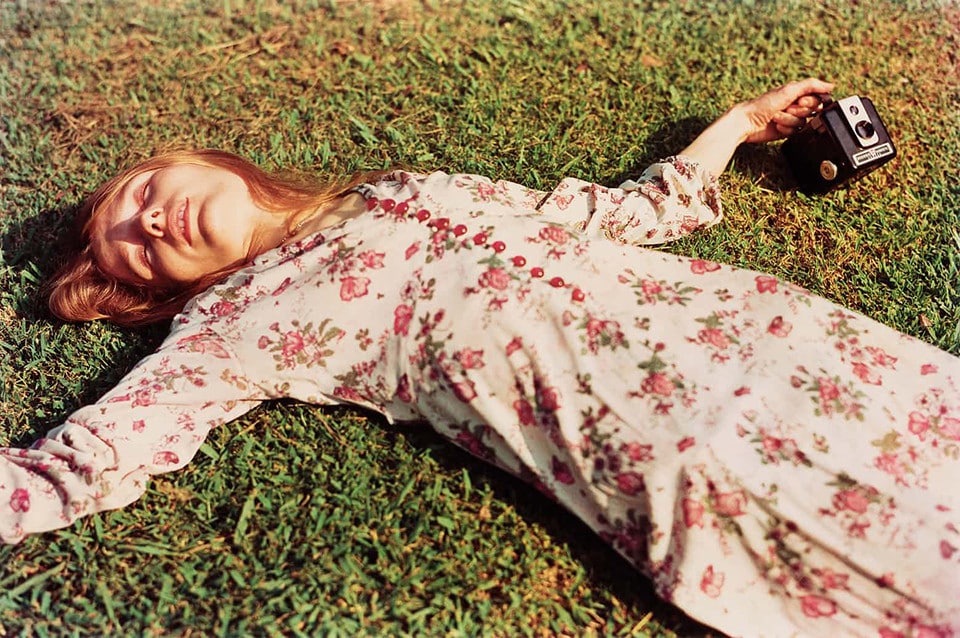
“Untitled Improvisation DAT 3.1 – 2.79″ + Untitled, c.1975 (Marcia Hare in Memphis Tennessee)
This portrait of a dancer Eggleston knew, named Marcia Hare, splayed out in the grass and holding a camera in her own hand, is one of the photographer’s most celebrated photos. The natural sunlight beams down on her perfectly, as she looks blissfully lost to the easy beauty of the day. Fittingly, there’s very little sharpness to it—the grass and most of her dress, adorned with roses and a striking line of spherical red buttons, are in soft focus, adding to the dreamlike quality of the picture. Instead, the focus is on her impossibly calm face, framed by shocks of orange hair. At least one viewer has likened the photo to Sir John Everett Millais’ painting of William Shakespeare’s Ophelia from Hamlet, lying on her back as she drowns in a Danish river.
There’s a sunny and dazed dreaminess to “Untitled Improvisation DAT 3.1 – 2.79″ as well. It begins piercingly, with a buzzed shock of synth, but soon moves into more droning territory, washing over the listener with sparse and warm throbs of harmonizing sound. It’s hard not to close your eyes and see something as sun-dappled and slow moving as Eggleston’s portrait of Hare—a scene that practically thrums with a heat and meditativeness that seems to slow time.
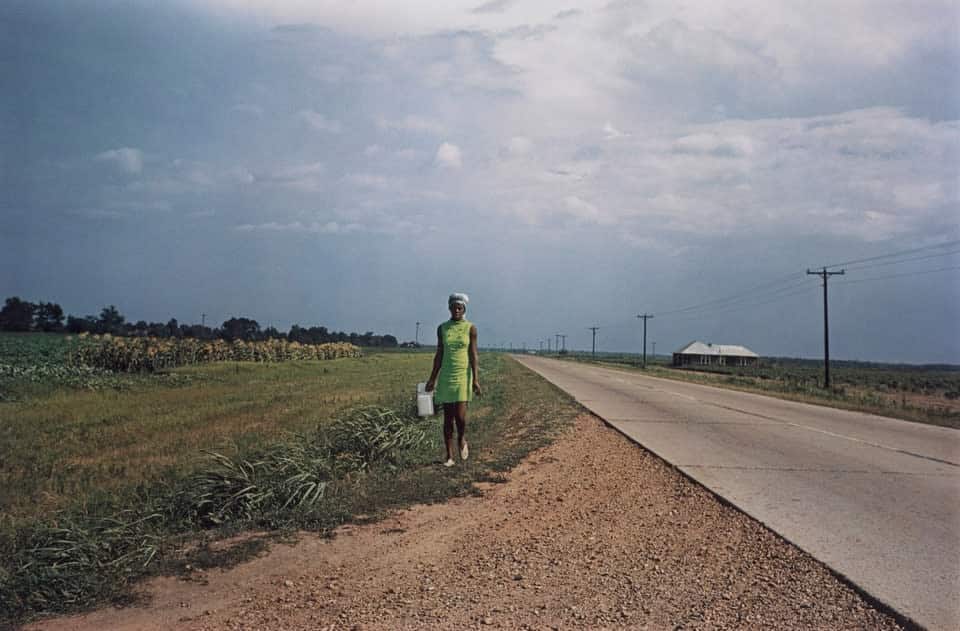
“Untitled Improvisation DCC 02.9″ + Untitled (1970, near Minter City and Glendora, Mississippi)
This 1970 shot of an African-American woman in a striking green dress, walking down a stretch of Mississippi highway, feels curiously like the capturing of the calm before the storm. The clouds in the background look friendly enough, but they become more blurred and the sky darkens the further back it goes. There’s an underlying strangeness to the scene, in part due to the vivid green of her dress, and the feelings of isolation and aloneness that such a wide open space often inspires. It almost feels like the woman is on her way to take shelter from something we can’t totally place.
At over eight minutes long, “Untitled Improvisation DCC 02.9″ is one of the longest pieces on Musik, and takes its time to explore different feelings within its long running time. At some moments, it feels calm and poised, while others seem almost actively spooky or uneasy. Through it all, though, there’s an ominous thread, as though the entire composition is leading toward a place that’s unpredictable, navigating a dim-lit present on the way to an unknown future. But it also bursts with energy at points, like the fields around the woman in the photo, or her nearly neon lime dress.
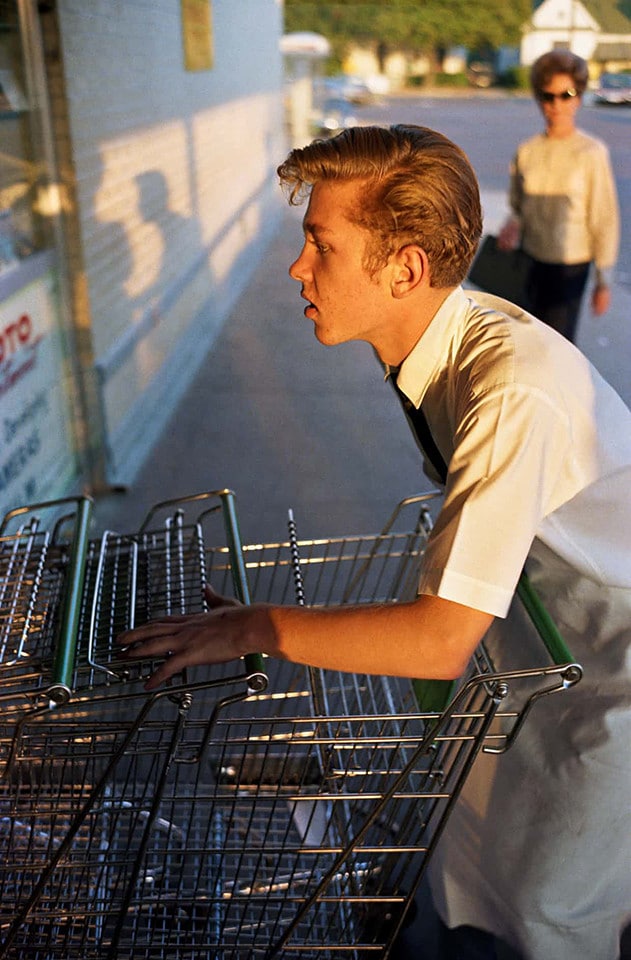
“On The Street Where You Live – Lerner/Lowe” + Untitled (1965, Memphis, Tennessee) and
Eggleston’s most famous photo—and the one he considered his first successful color negative—is a shot of a grocery store boy, around sunset, out in a parking lot, collecting and putting back a row of shopping carts. A woman with large sunglasses looks on toward the photographer. It’s remarkably simple at first glance, but opens itself up with further investigation. A shadow of the boy’s head is perfectly poised against the white outside wall of the store; his arm, at a natural 90 degrees, ends at the splayed fingers of his hand, indicating the carefulness with which he’s carrying out his duties; his profile is taken at just the right angle, and his rock ‘n’ roll, ‘60s American teenager haircut, lit perfectly by the sun, displays his charged youthfulness. But it’s a comforting snapshot of everyday life.
“On The Street Where You Live” was originally written for the Broadway musical My Fair Lady by Frederick Loewe and Alan Jay Lerner, and sung by the character Freddy Eynsford-Hill. It was released just nine years before Eggleston’s photo of the shop boy. It’s a love song buoyed by the endless possibilities falling in love inspires in the heart and mind. Eggleston’s brief take on the tune is sweet and peaceful, with his synthesizer providing string sounds that feel full of calm wonder.
It’s the same sort of feeling that his photo conjures—youthful possibility in sun-dappled light, rendered tranquil if only for a moment by the stillness of the medium. It’s nostalgic but energized, giving it a timeless quality.

Other articles you might like:
Navigating the World of Live Music and Concert Photography
Sweet, Honest Reactions of People Hearing Music for the First Time by Maya Fuhr
18 Photographs of Music Festivals Around the World
